
Well, I am going to take this opportunity to make some remarks about Russian "official" music, i.e., Russian national anthems. Let me refer you to the Russian Anthems Museum website. (What an unbelievable web page! There are hundreds of *.mp3 files of different versions of all the different anthems. Please take a moment and have a listen. My favorite is the current anthem sung by the children's choir of Mariinskii Teatr). See also The Soviet National Anthem website with a short history and also some *.mp3 files.
Going back to imperial Russia, the "anthem" was simply, "God Save the Tsar" (Bozhe, tsarya khrani). You will immediately recognize the tune as borrowed from the British; a lot of countries borrowed the song including the United States where the tune ended up as "My Country Tis of Thee." The use of "God Save the Tsar" in Russia dates to 1833 when Russian lyrics were put to the British melody. (See, Aleksei L'vov (1798-1870) in his memoirs explaining how Nicholas I ordered a new anthem.) The original British song, "God Save the King (or Queen)" has traditionally been used since the mid-1700s as the national anthem of the United Kingdom even though it has never been officially adopted by royal proclamation or parliamentary act.
After the Bolshevik Revolution, it became necessary to change the anthem, but the party was content to just use the old traditional working-man's song, the "Internationale," probably the world's most famous socialist song. The original words were written shortly after the defeat of the Paris Commune in 1870 by Eugène Pottier (1816–1887, a member of the Commune). Pierre Degeyter (1848–1932) set the poem to music in 1888.
In 1944, at the prompting of Stalin, the Soviet Union adopted a new, "national" anthem to replace the old "Internationale." The hymn was presented for the first time on 1 January 1944 and officially adopted as national hymn of the USSR on 15 March 1944. Music was composed by Aleksandr Aleksandrov (1883-1946) with lyrics by Sergei Mikhalkov (1913-?) and Gavriel El-Registan. (See Hymn of the Soviet Union (in Russian) memoirs by Sergei Mikhalkov (1998) and the Soviet national anthem.) The new anthem was clearly part of Stalin's wartime strategy of appealing to Russian national sentiments, such as the Orthodox church, mother Russia, etc., during the struggle with Nazi Germany.
Well, when Stalin finally died in 1953, there had to be some changes since his name was prominent in the anthem. So, you ask, what did the Russians do? Basically, they stopped singing the lyrics to the song; only instrumental versions were used. Finally, in 1977 (along with the Brezhnev constitution mentioned below), the lyrics to the song were revised with Stalin's name being removed. It again became okay to sing the song. After the collapse of the Soviet Union in 1991, Russia adopted a new national anthem, i.e., just tinkered with the wording again. Finally, at the end of 2000 the old melody of the Soviet anthem was adopted as the current National Hymn of Russia with Mikhalkov coming out of retirement to write some new lyrics to represent Russia's new existence.

While we are dealing with official anthems, I thought that I might offer some brief remarks about Russian "constitutions."
The present Constitution of the Russian Federation (Not sure why it is not called the "Eltsin" constitution.) was considered to have been ratified by the nationwide referendum that took place on 12 December 1993. I think that this is the only Russian "constitution" to have been put to a public vote. Have a look at Article 65 which defines the constituent parts of the current federation. There is also a copy of the constitution at www.friends-partners.org/oldfriends/constitution/russian-constitution.html; take a peak at the original Russian too.
Russia reached superpower status under Leonid Brezhnev. Since the
country was still operating under provisions of the old "Stalin"
constitution of 1936, it was decided to update the legal basis of the Soviet
Union. So, on 7 October 1977, the Supreme Soviet unanimously
adopted a new constitution, which became known as
the "Brezhnev" constitution,
named, of course, after Brezhnev. It is an extremely long, and
detailed document; a perfect expression of the bureaucratic nature of
the Brezhnev regime
The 1936 Soviet constitution, known as the "Stalin" constitution, was adopted on 5 December 1936 and served to consolidate the centralized powers of the government of the Soviet Union (another copy is at www.politicsforum.org/documents/constitution_ussr_1936.php.). Interestingly the constitution included provisions for universal direct suffrage and the right to work for all citizens!
In 1924, with the recent integration of the existing "soviet" republics, i.e., refering to the December 1922 union of the Russian Soviet Federated Socialist Republic, the Ukrainian Republic, the Belorussian Republic and the Transcaucasian Soviet Federated Socialist Republic to form the Union of Soviet Socialist Republics), a new constitution (Russian version) was needed. The constitution was approved within a few weeks after Lenin died in January 1924, and it clearly indicated that the communist party held a monopoly of political power. The constitution also included a commitment to gradually expand the USSR in the future by adding more and more republics, after they had been "liberated." This document is what finalized the creation of the USSR.
The first "soviet" constitution of the Russian Socialist Federated Soviet Republic--it basically applied to only "Russia"--was adopted on 10 July 1918. (Find another copy at www.soviet-empire.com/ussr/viewtopic.php?t=28549 or www.politicsforum.org/documents/constitution_rsfsr_1918.php). Interesting that the constitution was very much focused on world revolution and the complete overthrow of capitalism. Also, this constitution formally recognized the Bolsheviks as the controlling party of Russia according to the principle of the dictatorship of the proletariat.
Let me finally add that any detailed discussion of Soviet/Russian constitutions can be seen as essentially meaningless given the authoritarian nature of Russian politics since 1917 with the consolidation of political power in the Bolshevik/Communist party controlled by a single man. All of the rights, responsibilities, prescribed relations between the republics, the relationship between the republics and the central government, all of those details were basically meaningless because the party ran things according to party procedures (don't forget the terror apparat); moreover the party was run by a single individual (or at best a clique of people). Anyone who thought that a Soviet citizen had any real "rights" was just kidding himself. Now with the end of the Soviet Union and the re-establishment of a Russian federation and the Commonwealth of Independent States (CIS) the importance of the constitution is still not quite clear (despite statements to that effect by Russian political leaders), and I am not sure that the current constitution functions as an inviolable political document protecting the rights of all peoples in Russia (witness the conflict in the Caucasus or limits on freedom of expression).

What about Russian flags?
The Russian flag that most of us are used to seeing is the old flag of the Soviet Union with the hammer, sickle and star. That flag was adopted in 1923. (See these websites for more detail, Soviet Russia (1917-1923) and early flags of Russia in the Soviet Union (1923-1954) and Soviet Union.)
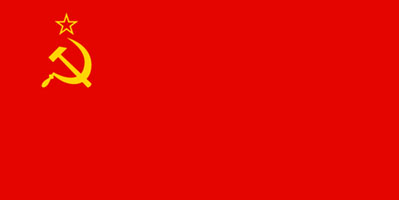
Now, in theory, the Soviet Union is no longer in existence; so it is the new Russian Federation flag.
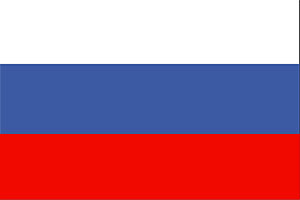
The current flag is the old imperial Russian tricolor (white, blue red) which can be traced all the way back to the seventeenth century. Tradition has it that Tsar Aleksei Mikhailovich first introduced the tricolor flag for use on naval vessels on the Caspian Sea. Then, in 1699 Peter the Great selected the tricolor as the Russian flag (See www.crwflags.com/fotw/flags/ru_emp.html.)
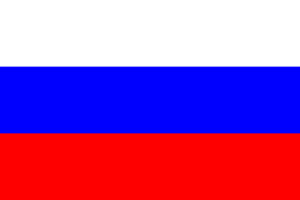
Nicholas I changed the colors of the tricolor to mimic the colors of the Romanov coat of arms. Alexander III later restored the previous flag, although the Nicholas version remained official too.
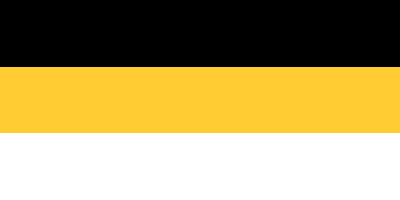
In 1914, a new version of the Russian flag was introduced.
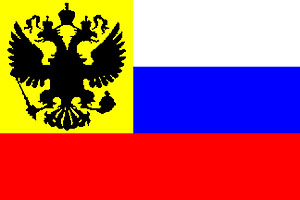
The most dramatic image of the Soviet flag that I can recall seeing was this photograph of the flag being planted on the roof of the German Reichstag building in Berlin on 30 April 1945, symbolizing the Russian victory over Nazi Germany in World War II.
